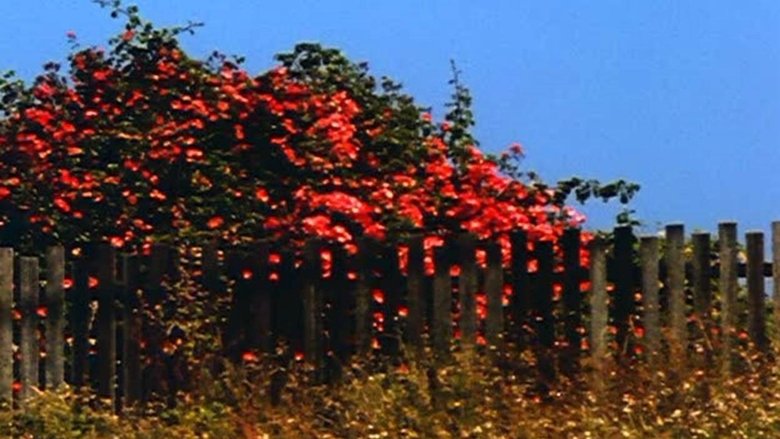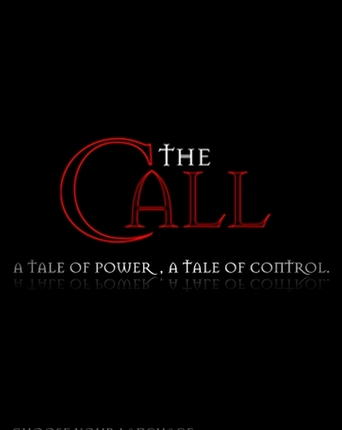All My Life (1966)
The film is made up of one single take. The camera pans to the left, focusing on a dilapidated fence in a rural field, as Ella Fitzgerald's "All My Life" plays on the soundtrack. At the end of the 3 minute film, the camera tilts up to the blue sky just as the song ends.
Watch Trailer
Free Trial Channels
Cast


Similar titles
Reviews
I gave it a 7.5 out of 10
Horrible, fascist and poorly acted
Fanciful, disturbing, and wildly original, it announces the arrival of a fresh, bold voice in American cinema.
Let me be very fair here, this is not the best movie in my opinion. But, this movie is fun, it has purpose and is very enjoyable to watch.
Beguiling 3 minute short film that consists simply of an extended pan past a wooden fence with flowers growing over it, ending with a tilt up into a blue sky as a scratchy recording of Ella Fitzgerald singing 'All My Life' plays over.It manages to be funny and a little sad, as the shoddy fence seems to say something about the poverty of the human world we're looking at, but the flowers and the tilt to the sky give some sort of hope. Baillie was a favorite director of Martin Scorsese's and I could see why from this short. Easy to see at video sites on the web. A quick Google will lead you there. And worth it
I can't say that the prospect of a 3-minute leftwards pan was appealing to me, but I actually found 'All My Life (1966)' quite relaxing. A filmmaker should never underestimate the power of a well-chosen soundtrack, and Ella Fitzgerald's "All My Life" works perfectly, evoking a simpler time and place. I don't see any reason why a backyard fence, examined from right-to-left, should be nostalgic in any way, but it is. The camera follows along the length of the fence, sometimes tilting upwards to take into account the bushes, and ends the film by rising up into the sky, passing a telephone wire and losing itself in the emptiness of the blue overhead. Aside from the camera movements, there's no action and no story. Just a fence, that music, and the memory of a childhood you'd forgotten.Many of the avant-garde films of the 1960s have a tendency to be unintelligible, and often very grating. 'All My Life' doesn't really have an obvious point to it, but, whatever it's doing, it seems to make a lot of sense. Maybe the length of fence represents a man's life (the film's title seems to support this idea). The missing pickets represent our mistakes in life. The continual leftwards-panning of the camera is inspired by the idea that, though we move leisurely through our lifetimes, we are nonetheless constantly moving forward, never able to turn around and correct the mistakes of our past, having always to suffer the consequences of our errors. At the end of our fences, of course, we go to Heaven, completely removed from the life we'd lived before. It's a novel interpretation, perhaps, but I like it.
And it's one of the most intense, compacted moments of joy in the cinema. I must have watched this minimalist music video-- Teddy Wilson's orchestra with the young Ella Fitzgerald delivering a ballroom swing number of the late 1930s, scratchily recorded-- fifty times... and never failed to be uplifted, and never known quite why.It's a continuous take, panning west, of a broken-down old clifftop fence-cum-hedge, sometimes floral, sometimes bare. At the end (as the vocal refrain ends and the orchestra slides into the final recapitulatory chorus) the camera eye soars calmly up into the wide blue yonder, crossing a telephone wire, and fades. And that's it.Sheer magic, a visual haiku. One hates to be at a loss for critical words, but 'All My Life' defies them. Just see it.
After accidently stumbling across the entry for Bruce Baillie's marvellous ALL MY LIFE, I was amazed to see that it had yet to receive even five votes. Well, not amazed exactly -- it is after all a three minute long avant-garde movie set to the Ella Fitzgerald song ALL MY LIFE -- but a little disappointed nonetheless. For those of you who haven't read the plot summary (so to speak), ALL MY LIFE is a movie about a fence. A three minute pan left of a fence. To spice things up, there are even a few rose bushes and a final tilt up to the sky as the song comes to an end.But why is this movie so good? I think one reason is perhaps the calmness that comes from its minimalism. It was made in the mid-sixties at a time when the American avant-garde movement was really booming: Andy Warhol, Stan Brakhage, et al. That was also a boom period for the drug scene (just listen to The Beatles!), and you can see a definite shift toward psychedelia and sensory overload. Even Warhol, for all his banality, was still in yer face. ALL MY LIFE, with its pared down mise-en-scene and music track that recalls an earlier era, seems to play in the other direction. An analogy might be the Talking Heads movie STOP MAKING SENSE, which adopted a very classical style in favour of the rock razzledazzle and MTV aesthetic that one associates with the mid-1980s.But ALL MY LIFE is deceptively simple and unassuming. There isn't room to do it justice here, but the implications of the pan left or the tilt to the sky seem quite profound -- even transcendental, as we observe the seemly banal and look up towards the heavens. It also quite simply reminds you that there's more to cinema than hyperfast cutting (stand up Mr Michael Bay) or supposedly breathtaking special effects (Mr Lucas). And, hey, if Bruce Baillie can do it with a fence, why can't you?!







